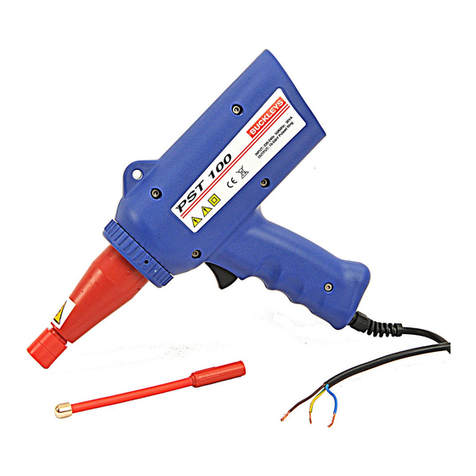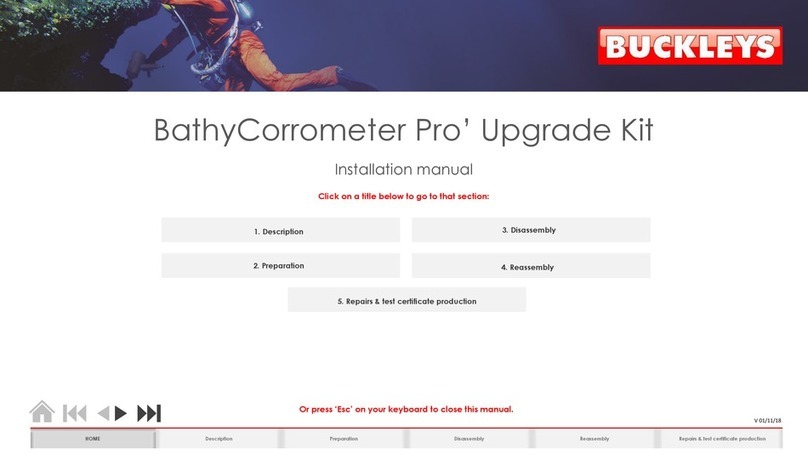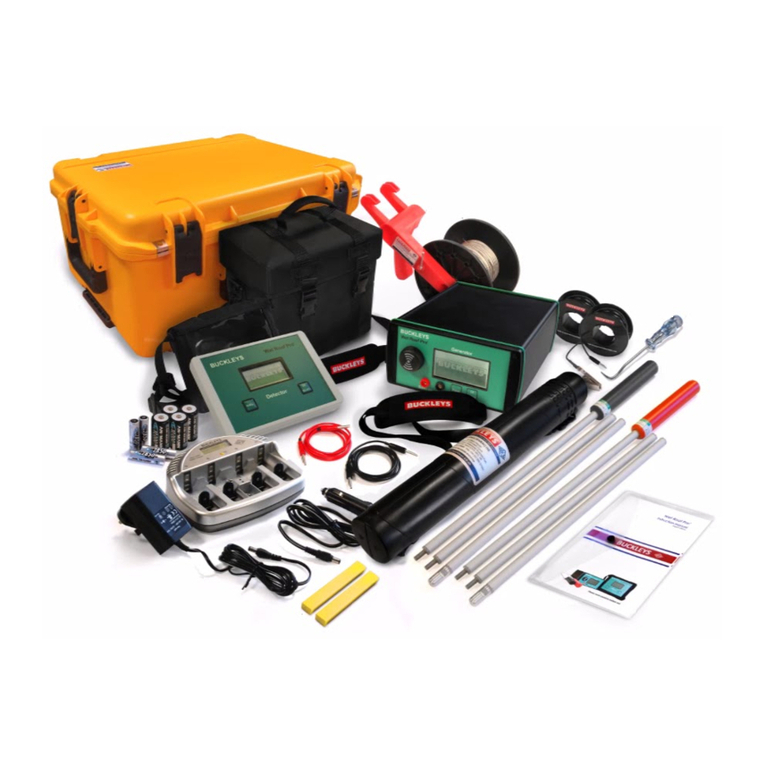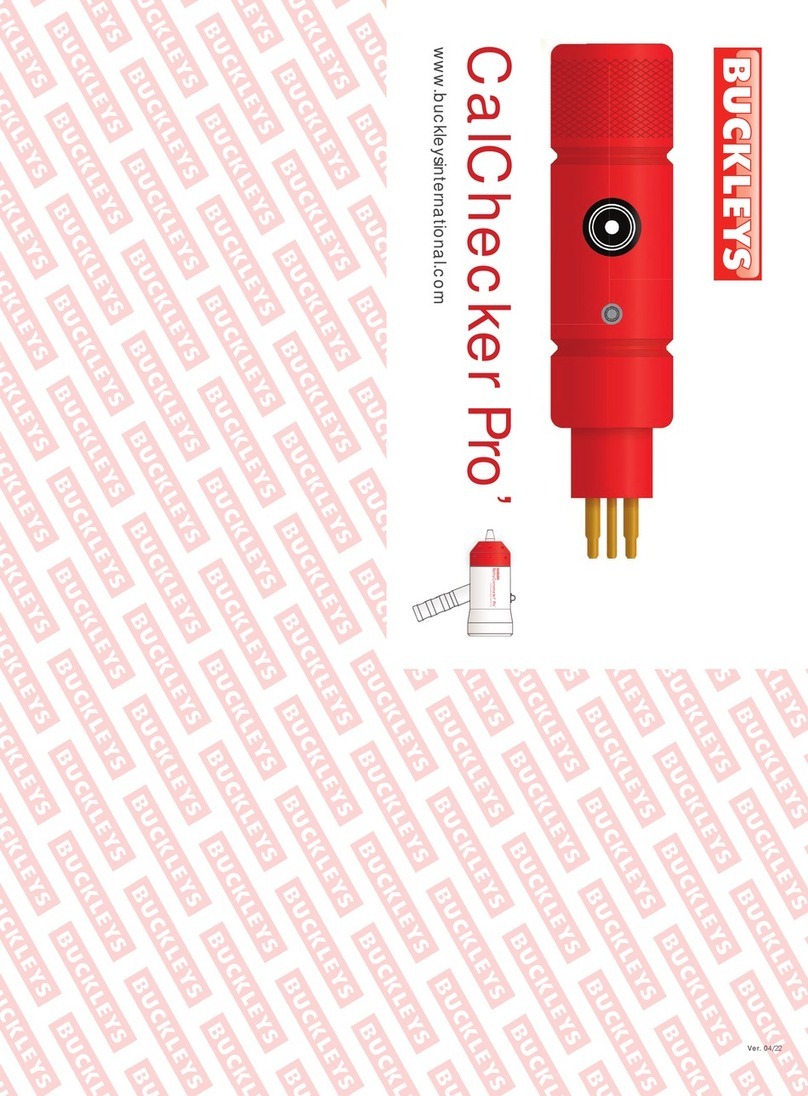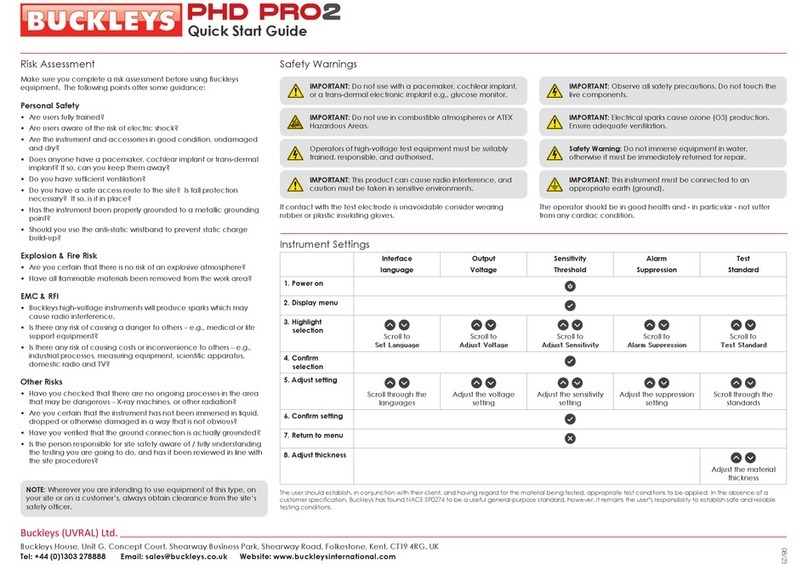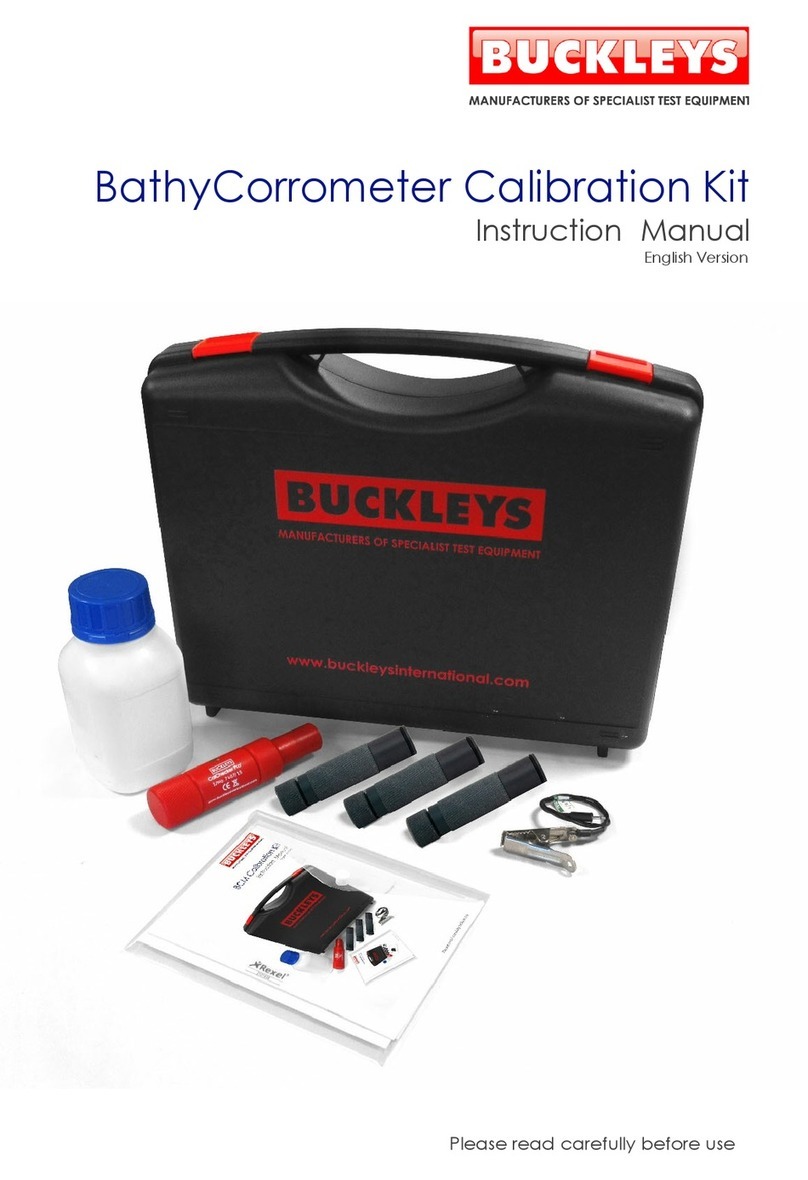Electromagnetic compatibility
Electromagnetic Emissions - European Union Directive:
Before operating this equipment it is essential that the following action be taken.
Risk assessment
As this equipment will produce an electromagnetic emission, when actually arcing down
through a fault to earth, a risk assessment of the area in which the unit will be used should
be carried out. For example, the equipment should not be operated where the
electromagnetic disturbance generated may hinder the operation of such apparatus as:
A Domestic radio and television receivers.
B Industrial manufacturing equipment.
C Mobile radio equipment.
D Mobile radio and commercial radiotelephone equipment.
E Medical and scientific apparatus.
F Information technology equipment.
G Domestic appliances and household electronic equipment.
H Aeronautical and marine radio apparatus.
I Educational electronic equipment.
J Telecommunication’s networks and apparatus.
K Radio and television broadcast transmitters.
L Lights and fluorescent lamps.
The Directive also requires the above types of equipment to have an adequate level of
electromagnetic immunity from such emissions. However, it should be borne in mind, when
doing an assessment, that the directive applies to equipment supplied or taken into
service after the 1st January 1996. The equipment you are assessing, although legal but
because of age, may not have this immunity.
The more common areas of risk are computers, critical safety equipment on process or
machine tools (fail/safe electronics), supply cables, control cables, signalling and telephone
cables above, below and adjacent to the area where the tests are being carried out.
The wearers of pacemakers and hearing aids should also be considered. Measuring and
calibration equipment may also be susceptible.
To make a comparison; arc welders, when in use, would create interference far greater
than this type of tester. It would, therefore, be reasonable to assume that if an arc
welder had been used in the area, without problems, then an AC pinhole detector
would be safe. However, it would be unwise to use both pieces of equipment on the
same site at the same time as they may interfere with each other.
The test area itself should also be considered. For example, the layout of the area would
affect the distances which the emissions would travel. Buildings and metal structures
tend to shield against, or reduce, emissions. If the tester were being used inside a metal
tank, for instance, the tank would act as a very good shield. This would not, however,
